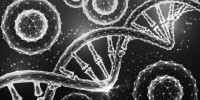
Decoding Fetal Macrophages: Impact on Stem Cells
Today we proudly present a recently published article by Amir Hossein Kayvanjoo, Iva Splichalova and many other great researchers from the University of Bonn, including our co-founder Kevin Baßler, uncovering the crucial role of fetal liver macrophages in shaping the hematopoietic stem cell niche.
Discover how this cutting-edge research not only challenges previous assumptions, but also opens up new avenues for regenerative medicine and stem cell therapy.
Unveiling the Role of Fetal Liver Macrophages: A Leap Forward in Hematopoietic Research and Regenerative Medicine
In an impressive display of scientific inquiry, researchers from Bonn University, with the notable inclusion of our co-founder Kevin Baßler among their ranks, have unveiled groundbreaking insights into the role of fetal liver macrophages in the development of the hematopoietic system.
Their study, titled "Fetal liver macrophages contribute to the hematopoietic stem cell niche by controlling granulopoiesis", not only deepens our understanding of embryonic immune system formation but also opens new doors for therapeutic applications in regenerative medicine and immune cell production.
At a Glance
Research Focus: The study investigates the role of macrophages in the fetal liver, particularly their influence on the hematopoietic stem cell (HSC) niche and granulopoiesis.
Key Findings: Distinct yolk sac-derived macrophage subpopulations interact preferentially with long-term HSCs, suggesting their integral role in shaping the fetal HSC niche.
Implications: Insights from this research could pave the way for developing innovative stem cell therapies and enhancing our understanding of embryonic development.
Contributors: Among the distinguished researchers is Kevin Baßler, co-founder of our organization, highlighting the interdisciplinary and collaborative nature of this scientific endeavor.
 Here, we investigate the heterogeneity of macrophage populations in the murine fetal liver to define their specific roles during hematopoiesis. Using a single-cell omics approach combined with spatial proteomics and genetic fate-mapping models, we found that fetal liver macrophages cluster into distinct yolk sac-derived subpopulations and that long-term HSCs are interacting preferentially with one of the macrophage subpopulations.
Here, we investigate the heterogeneity of macrophage populations in the murine fetal liver to define their specific roles during hematopoiesis. Using a single-cell omics approach combined with spatial proteomics and genetic fate-mapping models, we found that fetal liver macrophages cluster into distinct yolk sac-derived subpopulations and that long-term HSCs are interacting preferentially with one of the macrophage subpopulations.
Unraveling the Mysteries of the Fetal HSC Niche
During embryonic development, the fetal liver emerges as a crucial hematopoietic organ, orchestrating the formation of a complex network comprising stem and progenitor cells, along with a spectrum of immature to mature immune cells.
Within this intricate cellular tapestry, HSCs find their sanctuary within a specialized niche that is paramount for their subsequent proliferation and differentiation. The pioneering work has cast a spotlight on the cellular and molecular dynamics governing this niche, with a particular focus on the role of macrophages.
A Closer Look at Fetal Liver Macrophages
Historically recognized for their role in fetal erythropoiesis, macrophages' contribution to broader hematopoietic processes has remained a mystery until the unveiling of this study. Employing cutting-edge techniques including single-cell omics, spatial proteomics, and genetic fate-mapping models, the researchers have meticulously charted the landscape of macrophage subpopulations within the murine fetal liver.
These macrophages, derived from the yolk sac, exhibit a preferential interaction with long-term HSCs, marking them as pivotal players in the orchestration of the fetal HSC niche.
One of the study's key revelations is the nuanced role of macrophages in hematopoietic cell differentiation. The authors report, underscoring the delicate balance macrophages maintain in hematopoietic development:
 Fetal livers lacking macrophages show a delay in erythropoiesis and have an increased number of granulocytes, which can be attributed to transcriptional reprogramming and altered differentiation potential of long-term HSCs.
Fetal livers lacking macrophages show a delay in erythropoiesis and have an increased number of granulocytes, which can be attributed to transcriptional reprogramming and altered differentiation potential of long-term HSCs.
This observation lays bare the intricate interplay between macrophages and the hematopoietic system, challenging previous assumptions about their role.
Implications for Stem Cell Research and Beyond
The implications of this research are vast and varied. By unraveling the specific interactions between macrophage subpopulations and HSCs, the study paves the way for novel approaches in stem cell therapy and beyond.
The researchers elucidate, highlighting the potential for these findings to revolutionize therapeutic applications in regenerative medicine and immune cell production:
 Together, our data provide a detailed map of fetal liver macrophage subpopulations and implicate macrophages as part of the fetal HSC niche.
Together, our data provide a detailed map of fetal liver macrophage subpopulations and implicate macrophages as part of the fetal HSC niche.
Conclusion
This study marks a significant advance in our understanding of fetal hematopoiesis and the indispensable role of macrophages within the HSC niche. Through this research work, we gain not only insights into the fundamental processes of embryonic development but also a beacon guiding future endeavors in stem cell research and therapy.
Their findings not only underscore the critical role of macrophages in embryonic immune system formation but also herald a new era of possibilities for improving human health through scientific discovery and innovation.